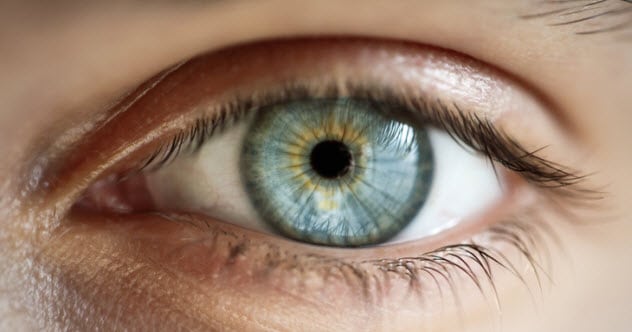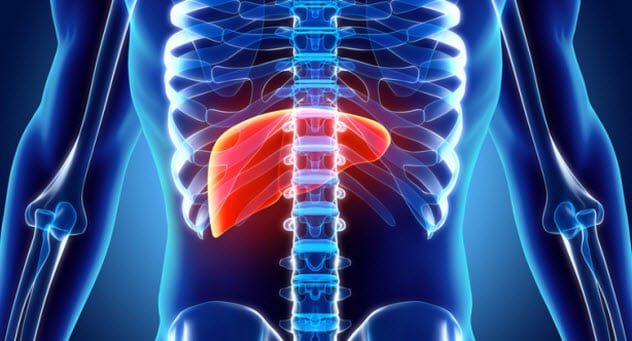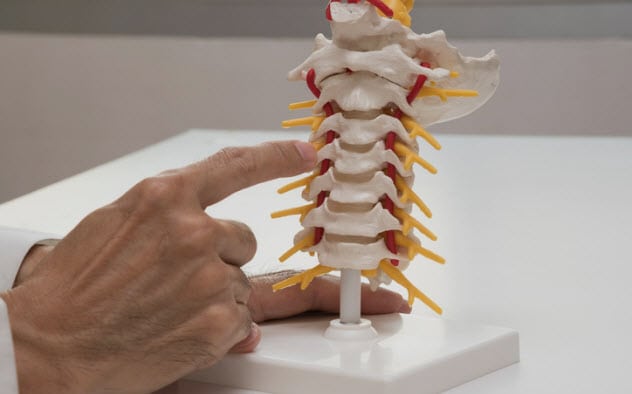 Miscellaneous
Miscellaneous  Miscellaneous
Miscellaneous  History
History 10 Huge Historical Events That Happened on Christmas Eve
 Music
Music 10 Surprising Origin Stories of Your Favorite Holiday Songs
 History
History 10 Less Than Jolly Events That Occurred on December 25
 Weird Stuff
Weird Stuff 10 Funny Ways That Researchers Overthink Christmas
 Politics
Politics 10 Political Scandals That Sent Crowds Into the Streets
 Weird Stuff
Weird Stuff Ten Bizarre Facts About The Doge Meme
 Our World
Our World 10 Ways Your Christmas Tree Is More Lit Than You Think
 Movies and TV
Movies and TV The 10 Coolest Stars to Set Sail on The Love Boat
 History
History 10 Things You Didn’t Know About the American National Anthem
 Miscellaneous
Miscellaneous Top 10 Things Crypto Was Supposed to Change & What Actually Did
 History
History 10 Huge Historical Events That Happened on Christmas Eve
 Music
Music 10 Surprising Origin Stories of Your Favorite Holiday Songs
Who's Behind Listverse?

Jamie Frater
Head Editor
Jamie founded Listverse due to an insatiable desire to share fascinating, obscure, and bizarre facts. He has been a guest speaker on numerous national radio and television stations and is a five time published author.
More About Us History
History 10 Less Than Jolly Events That Occurred on December 25
 Weird Stuff
Weird Stuff 10 Funny Ways That Researchers Overthink Christmas
 Politics
Politics 10 Political Scandals That Sent Crowds Into the Streets
 Weird Stuff
Weird Stuff Ten Bizarre Facts About The Doge Meme
 Our World
Our World 10 Ways Your Christmas Tree Is More Lit Than You Think
 Movies and TV
Movies and TV The 10 Coolest Stars to Set Sail on The Love Boat
 History
History 10 Things You Didn’t Know About the American National Anthem
10 Ways Stem Cells Have Been Advancing Medical Research
There is a distinct difference between non-embryonic and embryonic stem cells. As the name implies, embryonic stem cells are liberated exclusively from human embryos. A human embryo exists as soon as the first mitotic division of a fertilized human egg occurs.
Unlike the stem cells from umbilical cords or the ones found naturally in our bodies, embryonic stem cells can grow into any cell type. This doesn’t mean that umbilical and adult stem cells are useless; they are simply limited in the way they can be applied to certain research methods.
The benefits of stem cell research range from fighting cancer to improving genetic disorders. Despite their benefits, the question remains: How ethical is their use?
10 Corneal Damage

We need our eyes for almost everything we do. Unfortunately for many people, congenital and acquired diseases leave them with partial or full blindness. In America alone, over 35 million people suffer from these diseases, resulting in a steep cost of $139 billion per year.
Many eye diseases can benefit from stem cell treatment. One study showed a 76.6 percent success rate when stem cells were used to regrow healthy corneal tissue in patients who had loss of vision.
This was accomplished by obtaining healthy corneal cells from an organ donor. These cells were then cultured with embryonic stem cells and multiplied until there were enough to insert into the patient’s body.[1]
9 Osteoarthritis

If you are close with your grandparents or any elderly people at all, we’re sure you’ve heard of this one. Osteoarthritis is the most common joint disorder in America.
In a study published in the early 2000s, stem cells from adult bone marrow were used to protect the cartilage around joints which chronically breaks down when someone suffers from osteoarthritis.
The results were amazing. An injection of stem cells directly into the joint completely stopped the degeneration of the cartilage. This could theoretically stop the disease in its tracks in humans, making sure that it does not progress beyond a manageable state.[2]
8 Liver Disease

Usually, our livers do a good job of repairing themselves. It is the only organ in our bodies that can regenerate. Problems arise when the damage to our livers has progressed too far, resulting in scar tissue that cannot be replaced. This scarring can be caused by obesity, alcoholism, diabetes, and many other ailments.
The stem cells in adult bone marrow can be used to jump-start the liver’s reparative abilities, leading to recovery of highly damaged liver tissue and prevention of liver failure.[3] This could save countless lives as the liver is an organ that we cannot live without.
7 Heart Attacks

This one hits close to home for many people. It’s hard to find a family that doesn’t know the pain of a loved one or even themselves suffering from a heart attack.
A heart attack occurs when there is a blockage in a coronary artery leading to the heart. The heart tissue begins to die as there is limited or no access to oxygen. Our hearts cannot regenerate, and this damage can be fatal.
Embryonic stem cells were used to treat mice who had suffered heart attacks. The stem cells mimicked cardiac cells perfectly, showing evidence of probably using the electrical impulses that make our hearts beat. If treated with stem cells, heart attack survivors might significantly reduce their risk of a second episode while also minimizing the damage their heart attack caused.[4]
6 Spinal Disk Disorders

What is the number one thing that people complain about as they get older? “Ouch, my back hurts.” The sheer number of spinal issues is remarkable. In fact, 80 percent of Americans will have a back problem at some point in their lives.
Spinal disks are bone with a fluidlike inside that is sandwiched between our vertebrae. The purpose of these disks is to provide us with a range of motion and shock absorption. They naturally become thinner as we age due to the inability to regenerate this bone tissue. To combat this, adult stem cells were injected into the decaying disks of rabbits.
The results revealed a spectacular increase in the spinal disk cells, making the entire spine healthier.[5] This is a perfect example of how stem cells can be used in preventive medicine. We can stop the problem before it even happens.
5 Type 1 Diabetes

Type 1 diabetes is an autoimmune disease, meaning our own immune cells attack a part of our body. This is obviously counterintuitive and leads to severe complications. In this case, it is the beta cells of the pancreas that become compromised. Beta cells produce insulin, the hormone that regulates and processes the sugar that we ingest. Without the release of insulin, the individual will have to receive artificial insulin through injections.
Both adult and embryonic stem cells have been considered in regenerating these destroyed cells. Studies have shown mixed results. Some researchers have had success in replicating these missing beta cells, while others have not.[6] It is difficult to find the beta cells needed as a base colony, but the medical community is still optimistic about the possibilities that this line of research could bring.
4 Cancer

The way that stem cell research has been applied to cancer is very interesting. First, we have to realize where cancer starts, and that is in our own out-of-control, mutated cells. We do have a self-destruct sequence that takes care of cancerous cells in most cases. However, once the cells build up enough mutations, we can no longer deal with them.
In the specific example of breast cancer, research has led to finding clear genetic markers on our own stem cells that indicate that these cells will go on to rapidly and uncontrollably divide, leading to tumors.
This discovery has opened the door to some amazing opportunities. Once a tumor has started, it is very difficult to stop its growth in many cases. So mastectomies become the answer. We could eventually develop a prescreening method to find these cells and destroy them before the cancer begins.[7]
3 Autism

How can we possibly use stem cells to help a disorder rooted in so many genes that we can barely wrap our heads around its cause? Believe it or not, it is possible. It is not necessarily the cause we should be concerned about in the case of autism but the effect.
In children with autism, we often see parts of their brains suffering from hypoxia (lack of oxygen). If we introduce healthier blood cells in the brain by growing them with stem cells, we can theoretically improve brain function and lessen the symptoms of autism.
Clinical trials are being conducted on animals, and many researchers are optimistic. Whatever the results, we will still learn a lot about the cause and effect of autism.[8]
2 Parkinson’s Disease

This neurodegenerative disease is horrible in every sense of the word. It begins in the brain with the death of dopamine-producing neurons. Without this necessary neurotransmitter, movement of the body becomes increasingly difficult. This is when we see the classic signs that come with Parkinson’s disease—difficulty speaking, tremors, and more.
Embryonic stem cells were used to regrow entire dopaminergic neurons in patients suffering from Parkinson’s. With this breakthrough research, patients’ symptoms significantly improved and they got their lives back.[9]
Unfortunately, the resources for this treatment require four human embryos per person. This is simply not realistic if we want to cure a large group of people. Research is ongoing, and we hope to find a way to treat the masses effectively and efficiently.
1 Entire Organs

What if we could grow entire organs out of almost nothing?
It seems like an impossible feat, but this may become a reality. Organ donors are few and far between, but organ failure is not. Hundreds of thousands of people in America die each year from lung, kidney, liver, and heart failure.
Now imagine if we had ample numbers of perfectly healthy organs engineered from stem cells in all major hospitals just waiting to be placed into hosts who desperately needed them? We could prevent countless deaths in all age groups.
How could this realistically happen? Well, the process differs for each organ. What remains consistent, however, is that a basis is needed to begin the regrowth of a healthy organ.[10]
The ethics surrounding this are smack-dab in the gray area due to the number of stem cells and intact organs needed to make this possible. There is no doubt that stem cell research could save lives, but is it worth the cost?
I’m a fresh university graduate.
Read more fascinating stories about stem cells and other medical research on Top 10 Fascinating Things Grown In A Lab and 10 Oddities Of Reproductive Science.








